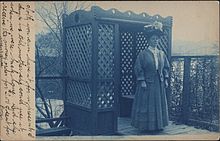!! Post in process
For my own etchings and etching techniques see Etching Techniques
Origin and printmakers
Etching was used by goldsmiths and other metal-workers in order to decorate metal items such as guns, armour, cups and plates. The technique has been known in Europe since the Middle Ages at least, and may go back to antiquity.
The process as applied to printmaking is believed to have been invented by Daniel Hopfer (circa 1470–1536) of Augsburg, Germany. (See Google images)
In Renaissance Italy with a switch to copper plates, etching soon came to challenge engraving as the most popular medium for artists in printmaking.
Jacques Callot (1592–1635) from Nancy in Lorraine (now part of France) made significant technical advances, attributed with developing:
- the échoppe, a type of etching-needle with a slanting oval section at the end. This enabled etchers to create a swelling line, as engravers were able to do.
- an improved, harder, recipe for the etching ground, using lute-makers’ varnish rather than a wax-based formula. This enabled lines to be more deeply bitten, prolonging the life of the plate in printing, and also greatly reducing the risk of “foul-biting”, where acid gets through the ground to the plate where it is not intended to, producing spots or blotches on the image. This meant etchers could do highly detailed work that was previously the monopoly of engravers.
- more extensive and sophisticated use of multiple “stoppings-out”letting the acid bite lightly over the whole plate, then stopping-out those parts of the work which the artist wishes to keep light in tone by covering them with ground before bathing the plate in acid again. He achieved unprecedented subtlety in effects of distance and light and shade by careful control of this process.
Most of his prints were relatively small—up to about six inches or 15 cm on their longest dimension, but packed with detail.(See Google images).
One of his followers, the Parisian Abraham Bosse, spread Callot’s innovations all over Europe with the first published manual of etching, which was translated into Italian, Dutch, German and English.
17th and 18th century was the great age of etching:
Etching has often been combined with other intaglio techniques such as engraving (e.g., Rembrandt) or aquatint (e.g., Francisco Goya).
19th and early 20th century
Bibliography
Adler, K., (2006) Mary Cassatt: Prints, London: National Gallery.
Bikker, J., Webber, G. J. M., Wiesman, M. W. & Hinterding, E., (2014) Rembrandt: the late works, London: National Gallery.
Bikker, J. & Weber, G. J. M., (2015) Rembrandt: The Late Works, London: National Gallery.
Cate, P. D. & Grivel, M., (1992) From Pissaro to Picasso: color etching in France, Paris: Flammarion.
Cohen, J. (ed.) (1995) Picasso: Inside the Image, London: Thames & Hudson.
Coppel, S., (1998) Picasso and Printmaking in Paris, London: South BGank Publishing.
D’arcy Hughes, A. & Vernon-Morris, H., (2008) The Printmaking Bible: the complete guide to materials and techniques, San Francisco: Chronicle Books.
Freud, L., (2008) On Paper, London: Jonathan Cape.
Grabowski, B. & Flick, B., (2009) Printmaking: A Complete Guide to Materials and processes, London: Lawrence King Publishing.
Griffiths, A., (1980) Prints and Printmaking: An introduction to the history and techniques, London: British Museum Press.
Guse, E.-G. & Morat, F. A., (2008) Georio Morandi: paintings, watercolours, drawings, etchings, Munich, Berlin, London, New York: Prestel.
Hambling, M., (2009) The Sea, Salford Quays: The Lowry Press.
Lloyd, R., (2014) Hockney Printmaker, London: Acala Arts & Heritage Publishers Ltd.
Martin, J., (1993) The Encyclopedia of Printmaking Techniques, London: Quarto Publishing.
Meyrick, R., (2013) Sydney Lee Prints: A Catalogue Raisonnee, London: Royal Academy of the Arts.
Pogue, D., (2012) Printmaking Revolution : new advancements in technology, safety and sustainability, New York: watson-guptill publications.
Royalton-Kisch, M., (2006) Rembrandt as Printmaker, London: Hayward Gallery Touring.
Salamon, F., (1972) The History of Prints and Printmaking from Durer to Picasso: A guide to collecting, New York, Sat Louis, San Francisco: American Heritage Press.
Stobart, J., (2001) Printmaking for Beginners, London: A&C Black.
Woods, L., (2011) The Printmaking Handbook: Simple techniques and step-be-step projects, London: Search Press.
Wye, D., (2017) Louise Bourgeois: An Unfolding Portrait, New York: MoMA.
Zigrosser, C., (1951) Prints and Drawings of Kathhe Kollwitz, New York: Dover Publications.
Exhibitions and Galleries
Museum Boijmans van Beuningen, Rotterdam
Rembrandt Etchings permanent collection
British Museum
Picasso post-war prints: lithographs and aquatints (27 January – 3 March 2017)
Maggi Hambling – Touch: works on paper (8 September 2016 –29 January 2017)
Germany divided: Baselitz and his generation From the Duerckheim Collection (6 February – 31 August 2014)
Fitzwilliam Museum, Cambridge
Degas, Desboutin and Rembrandt: parallels in prints (27 October 2017 – 25 February 2018)
Fatal Consequences:The Chapman Brothers and Goya’s Disasters of War (14 October 2014 – 8 February 2015) etchings
Maggi Hambling: The Wave (27 April – 8 August 2010) monoprints and ethcings
National Gallery
Royal Academy
Etching: The Infernal Method (15 September 2017 — 19 February 2018)
Snape Maltings, Suffolk
Regular sales and exhibitions of prints and landscapes from Suffolk.









